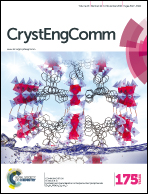A precursor-derived morphology-controlled synthesis method for mesoporous Co3O4 nanostructures towards supercapacitor application†
Abstract
The controlled synthesis of multifarious nanostructures is valuable for understanding the properties associated with the surface structure and for exploring potential applications. Herein, various morphological Co3O4 precursors were synthesized hydrothermally for fabricating mesoporous Co3O4 nanostructures. Importantly, the morphology, size, and crystalline phase of precursors were independently tuned by controlling the components in solution (e.g. anions, cations, and hydrolysis agents). The microstructure of Co3O4 precursors has obviously changed from porous hexagons to nanoneedles by changing the anions in solution. After calcination, as-prepared precursors were converted into mesoporous Co3O4 nanostructures, and their morphology and size were well preserved. The effect of experimental conditions on the growth of Co3O4 precursors was explored, and the corresponding growth mechanism was proposed. Moreover, the electrochemical properties of Co3O4 with different morphologies were tested. The results showed that the 3D hierarchical flower-like Co3O4 assembled by hexagonal nanosheets exhibited higher specific capacitance (327.3 F g−1 at 0.5 A g−1) with excellent retention (96.07% at 5 A g−1) after 10 000 cycles. It is believed that this anion-assisted synthetic approach can be extended to the preparation of other transition metal oxides.


 Please wait while we load your content...
Please wait while we load your content...